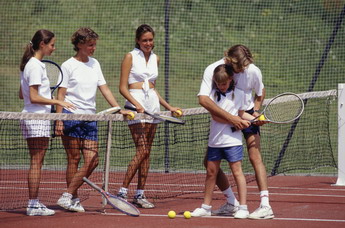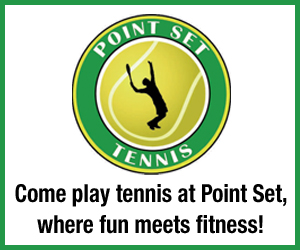Is It the Message or the Messenger?

We know teaching is more art than science, but we’re still undecided on what matters the most … the message or the messenger? First, let’s take a look at the messenger, or the way in which we deliver the “goods.”
Methodology is determined by many factors. Every teacher and coach, has their own shtick or style. Some are excessively verbal, others just feed you lots of balls and bull, while most are somewhere in between. The way we deliver our message is also influenced, and should be, by the one learning. Some students learn best by verbal cues, others by visual images and most, kinesthetically, by performing a task and self-discovery. The effective teacher or coach must take in to consideration all of these factors and choose the most appropriate method of delivery. While one needs to “be yourself,” it is the truly effective teacher, coach or pro who has the unique ability to be everything to everyone. To give tough love when that’s appropriate, to be a taskmaster, to be a father or mother figure, to guide, to cajole, use humor, anything that gets the message across to that specific student, class or group. Teachers are guides, facilitators and partners, not just teachers. Learning … and isn’t that what it’s all about … is a process best accomplished by the learner, with assistance from an engaged teacher. Enough said!
Now for the message … the body of knowledge, the skill, the tactic or anything we wish to convey is finite. It’s probably been done before (see my article, “What’s New is Old, Again …”). Take, for instance, the so-called “modern method” of teaching tennis. Windshield wiper forehands, double-handed backhands, swing volleys, etc. Is this really new and, more importantly, is it suitable to teach at any level. Today’s tennis professionals, in my humble opinion, are doing a disservice to their clientele by offering up a hybrid approach to teaching. I’ve seen it all. The classic teachers of early preparation and a straight follow through and the opposite, the so-called modern professionals who teach tracking balls until the last second and then striking with a more circular swing. No matter which method one teaches, it is more important not to give conflicting signals. Personally, I teach a more modern approach which I believe is suited to all levels of play. Let’s take a look at a couple of other motor skills to illustrate my point.
In golf, one of my favorite activities, did anyone ever notice how today’s players seem more similar in their swings than their counterparts of years ago? Arnold Palmer looked nothing like Jack Nicklaus. Lee Trevino’s swing was so idiosyncratic that you could spot him miles away and all the greats of former eras had different swings and were all successful. Today, however, everyone looks alike! With the advent of video replay, golf swings have evolved to become a model of efficiency. By that I mean the simplest and most natural technique has become the “modern” way to hit a golf ball. Taking into consideration differences in body builds, levels of flexibility and athletic prowess, everyone seems to swing a golf club in a similar manner.
So too with tennis players. All great tennis players seem to have similar components to their games. They share commonalities that are evident and teachable, and teachable to everyone! Their techniques are natural and efficient. There is a reason why everyone walks in a similar manner. It’s the most natural and efficient way. A noted child psychologist once said, “If kids could talk before they could walk, then walking would be the most difficult motor skill.” He was referring to the fact that are no “walking gurus,” no one has to be taught to walk. You simply say to little Johnny, “Get over here!” Walking is natural and self-discovered, and ultimately, the most efficient way to get from point A to point B.
Why can’t tennis or golf be the same? To some extent, they can be the same. In order to teach a more natural and comfortable way to strike a tennis ball, I believe you should allow the learner to figure it out for themselves. Learners will always do what comes natural or comfortable to them, rather than be correct. Allowing them to problem-solve is the key. If I can show you a better way to get from point A to point B, wouldn’t you be motivated to try it? Even if it were uncomfortable at first? It is this process that allows the most lasting and permanent learning, and in the end, the most efficient and natural.
All of the greats of the past decade tend to look alike on many levels. Their serving motions, their forehands and their movements seems so efficient and natural, and thus, strikingly similar. Sure, there are exceptions, such as the early preparation of the Williams Sisters, the extreme grips of Nadal, etc. This merely points out that there is an acceptable range of style but, still many similarities of great performers. Personally, I believe that emulating the best, most efficient methods of play is an excellent starting point. If the best do it a certain way, shouldn’t I? If they (the best) have discovered certain methods, styles or ways to perform, why shouldn’t I utilize them?
You’ve heard the expression, “They make it look so easy.” Well, there’s a reason for that. It’s the economy of motion. It’s the shortest distance between two points. It’s the path of least resistance and the most natural and efficient. And, still better, it’s not just for the elite.
So what have we learned? There’s a message and a messenger. The message hasn’t changed all that much, but there are many different ways to deliver it. It’s best not to confuse learners with hybrid methodologies. Form follows function. The way to hit a tennis ball is the most natural and most comfortable, although, in many instances, not comfortable at first. It’s the most efficient method that wins out in the end. While there are exceptions, most successful athletes tend to perform in a similar manner. Just as people seem to walk, throw a ball, swing a golf club, and they similarly hit a tennis ball. The modern method of tennis is not that new, but it is the most efficient and natural.
Until next time …






